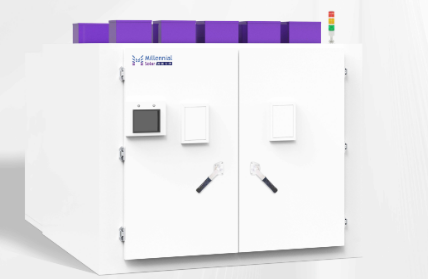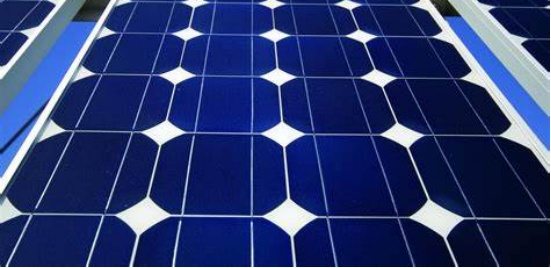
Quantum Efficiency Tester
PL/EL Integrated System
PV-Reflectumeter
3D Confocal Microscope
In-Line Four Point Probe Tester
Four Point Probe Tester
In-Line Thin Film Thickness Tester
Raman Spectrometer
FTIR Spectrometer
Spectrophotometer
Automatic Spectroscopic Ellipsometer
Contact Resistance Tester
Ultra depth of field 3D microscope
Auto Visual Tester
VMM PV Vision Measuring Machine
Solar Cell Horizontal Tensile Tester
Steady State Solar Simulator for Solar Cell
Solar Cell UV Aging Test Chamber
Solar Cell Comprehensive Tensile Tester
Visual Inspection Tester
Wet Leakage Current Tester
PV Module EL Tester
PV Module UV Preconditioning Chamber
Steady State Solar Simulator for PV Module
Current Continuous Monitor
Potential Induced Degradation Test
Bypass Diode Tester
LeTID Test System
Reverse Current Overload Tester
Impulse Voltage Tester
Hipot Insulation Tester
Ground Continuity Tester
Hipot Insulation Ground Tester
Damp Heat Test Chamber
Humidity Freeze Test
Thermal Cycle Test Chamber
Dynamic Mechanical Load Tester
Static Mechanical Load Tester
Hail Impact Tester
Robustness of Termination Tester
Module Breakage Tester
Cut Susceptibility Tester
Peel Shear Strength Tester
Universal Testing Machine (Single-arm)
Universal Testing Machine (Double-arm)
Glass Transmittance Tester
Acetic Acid Test Chamber
EVA Degree of Crosslinking Test System
Junction Box Comprehensive Tester
Drop ball tester
Semi-automatic scanning four-probe tester
Stylus Profilometer
Maximum Power Point Tracker
Perovskite Glass Transmittance Tester
Perovskite P1 Laser Scribing Multifunctional Testing Machine
Perovskite Online PL Tester
Perovskite Online Sheet Resistance Tester
Online Perovskite Film Thickness Tester
Perovskite Process Inspection Workstation
Portable IV Curve Tester
Portable EL Tester
Portable Thermal Imaging Tester
Solar Module Multi-Channel Testing System
PV Inverter Power Quality Tester
Drone EL Tester
IV Tester
IVEL Cell Sorting Machine
Precision Equipment for Evaluating Photovoltaic Module Performance - Millennial Solar Simulator
Date : 2023-09-27Views : 165
Since photovoltaic modules are often tested in natural environments, there are phenomena such as long test cycles and poor data repeatability, which seriously affect the test results. The solar simulator owned by Millennial Solar is a light source device that simulates the solar spectrum and light intensity. It can achieve different solar irradiances to meet the unique requirements of testing in different environments. In this issue of Millennial Solar, we will introduce the precise device for evaluating the performance of photovoltaic modules - the solar simulator!
![]()
Millennial Solar Simulator
The solar simulator produced by Millennial Solar uses metal halide lamps that can simulate the full sunlight spectrum to reproduce the destructive light waves that exist in different environments. It can provide testing and simulation in different environments for photovoltaic product development and quality assurance. It is a Photovoltaic module quality testing equipment that presents real physical characteristics such as solar radiation spectral distribution, spot size, irradiation intensity, irradiation uniformity, and irradiation stability. It can be used to test the solar cell packaging structure of photovoltaic modules, EVA film, Polymer materials such as backsheets, junction boxes, and cables are precision equipment designed to verify the performance changes of solar modules after being exposed to ultraviolet light.

E-mail: market@millennialsolar.cn
![]()
How a solar simulator works
The solar simulator is mainly composed of optical integrator mirror, ellipsoid reflector, shutter, filter, collimating lens, light source and other components. Its working principle is that the xenon lamp is located at the center of the solar simulator. The emitted light is flipped 90° through the first 45° plane mirror and falls on the integrating mirror placed at the focus of the ellipsoid, so that the light is evenly dispersed,the beam then passes through the filter,and the filter out excess infrared radiation in this band,then through the second 45° plane mirror, it is flipped 90°,falls on the collimating lens at last.

The solar simulator will set the optical parameters required by the system for light collection, beam homogenization, filtering and collimation. And it is output in the form of parallel light after passing through the collimating lens.
![]()
Irradiance stability of solar simulator
The irradiance stability of the solar simulator refers to the stability of the irradiance value in a specified area on the test plane, and is generally evaluated by irradiance instability. Pick any coordinate in the designated area on the test plane and record the change of the irradiance value at that point within a certain period of time. The maximum irradiance value measured within the test time is recorded as E’max.The minimum value of irradiance is recorded as E’min. The calculation formula of the irradiance instability of the solar simulator is as follows:

In the formula, Ns represents the irradiation instability of the solar simulator; E'max represents the maximum irradiance of any measurement point in the test plane during data collection, in W/㎡; E'min represents any measurement during data collection. The minimum irradiance of a point in the test plane, in W/㎡.
Millennial solar simulator can perform control tests in various environments. Even in indoor environments without sunlight, it can simulate sunlight to detect photovoltaic modules and determine whether their quality meets industrial standards, assisting photovoltaic Module manufacturers supervise the production of photovoltaic modules!

































































